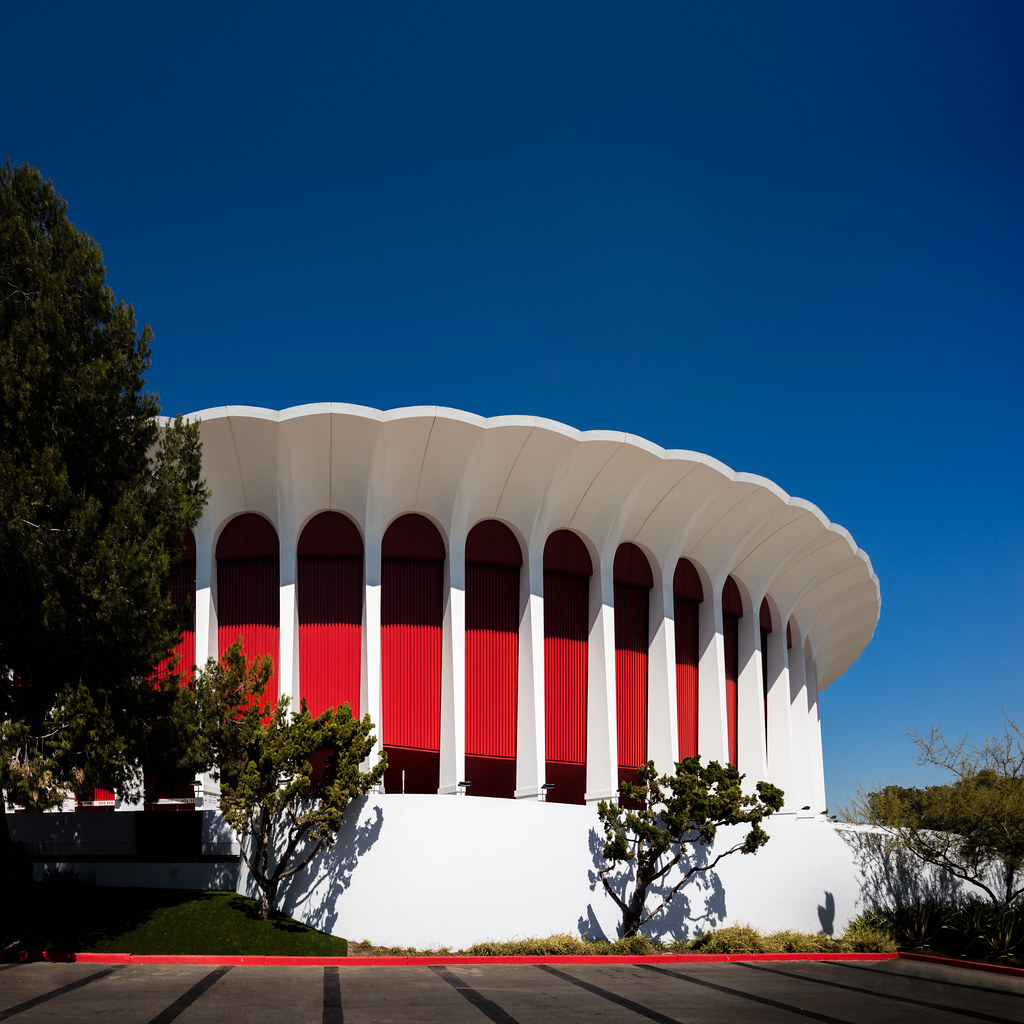 |
| LA Forum by Charles Luckman (1967)... See what I did there with the title of the blog? I know... I crack myself up. Photo ©Darren Bradley |
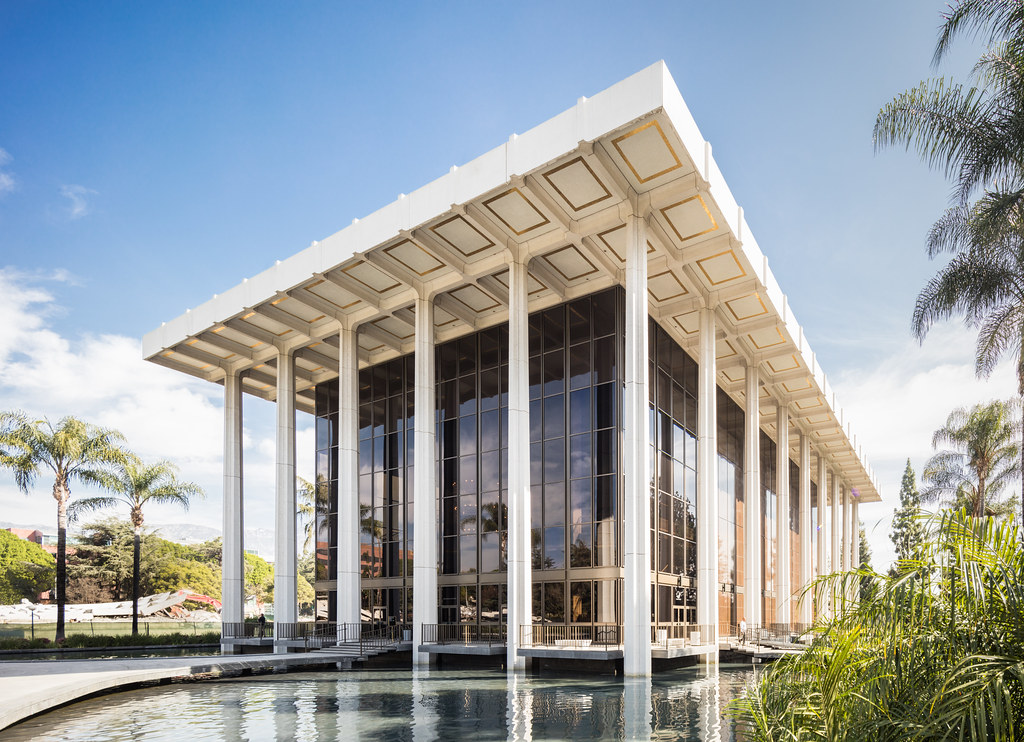 |
| Ambassador Auditorium in Pasadena by Daniel, Mann, Johnson, and Mendenhall in 1974. Photo ©Darren Bradley |
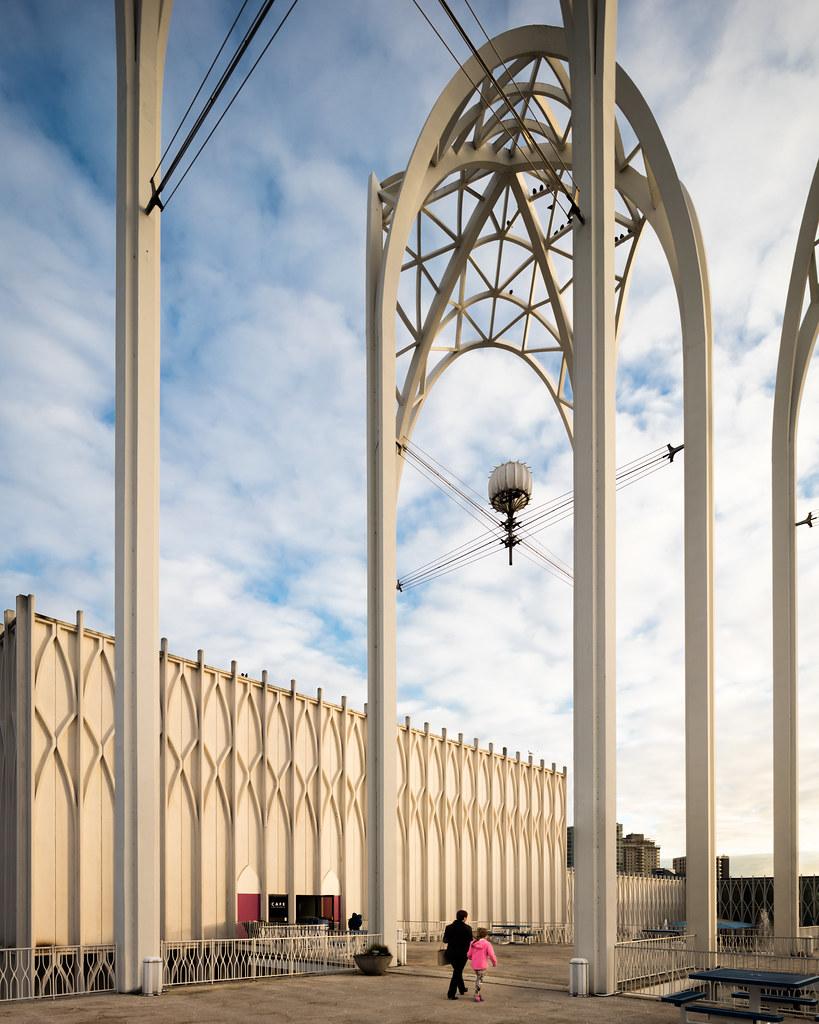 |
| United States Science Pavilion for the Seattle World's Fair, by Minoru Yamasaki (1962). Photo ©Darren Bradley |
They frequently employed marble and travertine (or white-painted concrete meant to mimic these materials). As I mentioned above, long colonnades and archways were common. The proportions and layouts of the buildings also had more in common with Palladio than with Gropius.
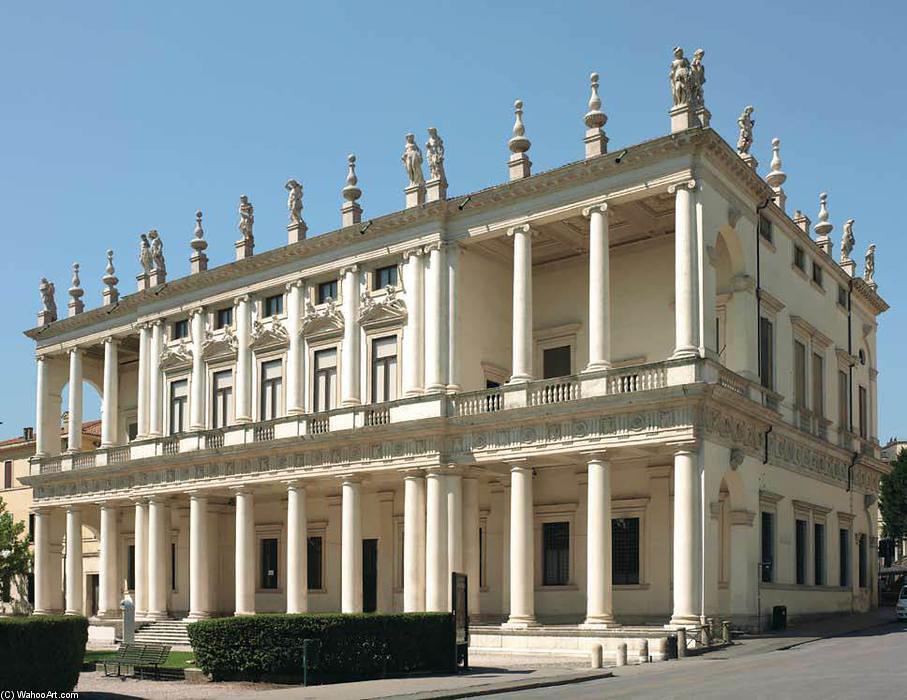 |
| Palazzo Chiericati by Andrea Palladio (1550), in Vincenza, Italy. |
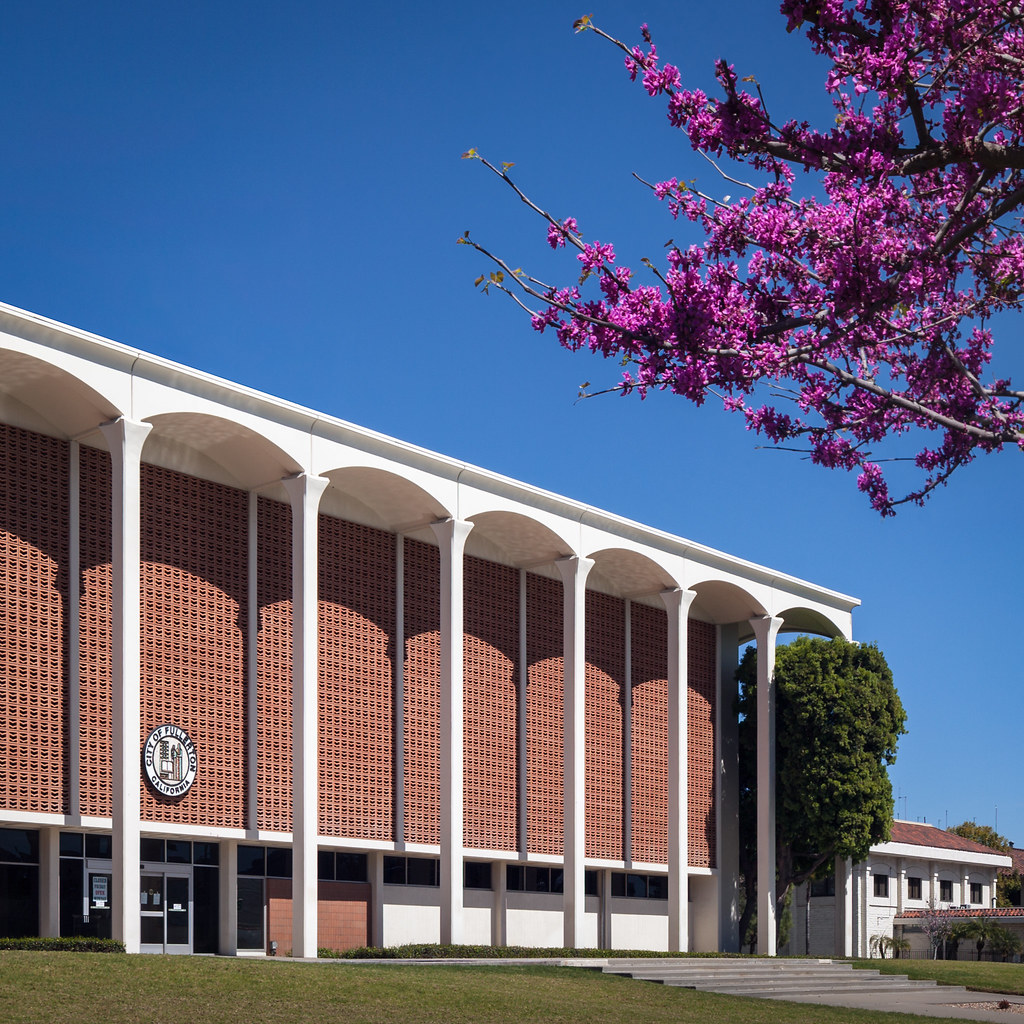 |
| Fullerton City Hall by Smith, Powell & Morgridge (1963) employs relatively modest materials. Photo ©Darren Bradley |
But it was also used for banks, apartment buildings, houses, and other places that were trying to convey a sense of wealth and power.
 |
| New Formalist bank building in North Charleston, SC. Photo ©Darren Bradley |
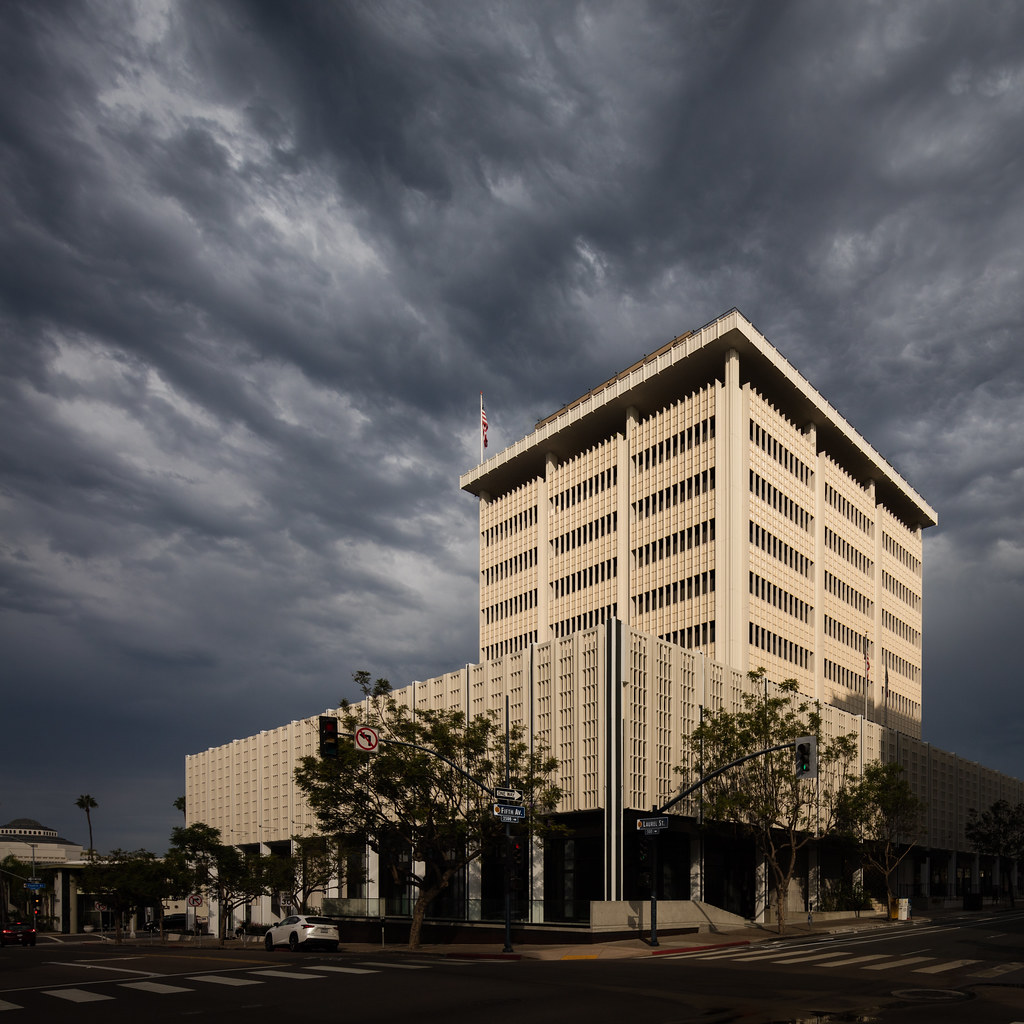 |
| Fifth Avenue Financial Center by Freeland, Bird & Associates in San Diego (1965). Photo ©Darren Bradley |
Perhaps the best known master of New Formalism was Edward Durell Stone, who helped to define the style by fusing his classic Beaux-Arts training with International Modernist functionality and introduced *gasp* ornamentation into his designs. Stone paid dearly for his transgression - often receiving harsh criticism from the more orthodox Modernists. In fact, he was probably the most reviled architect of his day (and for many days after that, as well... still today). Ada Louise Huxtable, the infamous, respected/feared architecture critic for The New York Times, was known for her hatred of his work. In her obituary, THREE WHOLE PARAGRAPHS were dedicated to how much she disliked Stone's work.
Author Tom Wolfe, who himself harboured no great love for Modernism, wrote this about Stone in his book From Bauhaus to Our House:
The moment the New Delhi embassy was unveiled, Stone was dropped like an embezzler by le monde of fashionable architecture, which is to say, the university-based world of the European compounds. Gold here and luxurious there and marbled and curvilinear everywhere […] How very bour— No, it was bourgeois ne plus ultra. There was no way that even Mies himself, master of the bronze wide-flange beam, could have argued his way out of a production like this one. What made it more galling was that Stone didn’t even try. He kissed off the International Style.
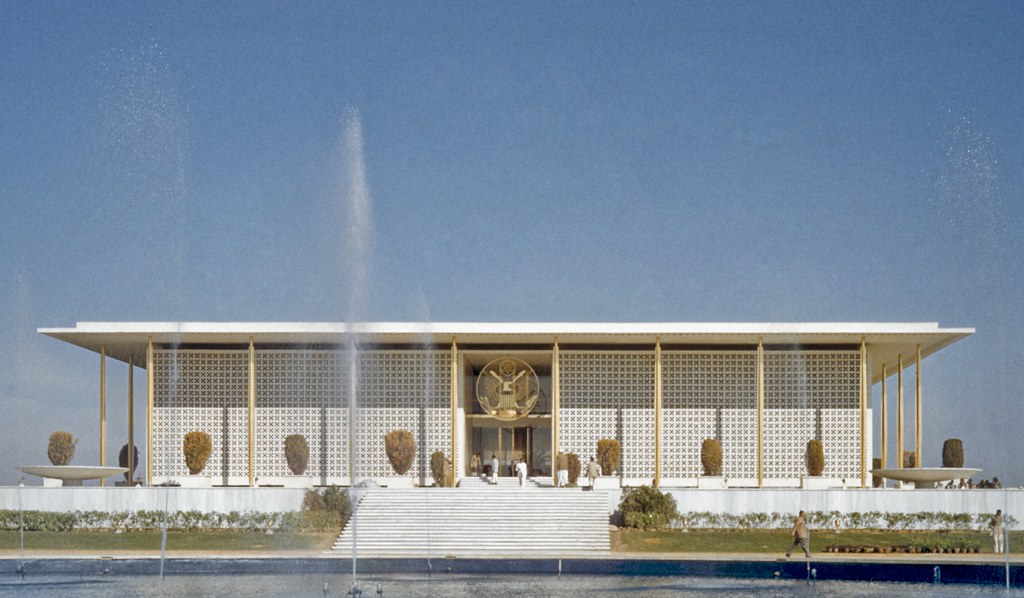 |
| American Embassy in New Delhi by Edward Durell Stone. |
The aforementioned Huxtable had this to say about the Kennedy Center (re-quoted in her obituary in the New York Times):
"Albert Speer would have approved,” she said in 1971 about his Kennedy Center for the Performing Arts in Washington, linking Mr. Stone indirectly to the Nazis’ chief architect. “The building is a national tragedy. It is a cross between a concrete candy box and a marble sarcophagus in which the art of architecture lies buried.”Not mincing words there...
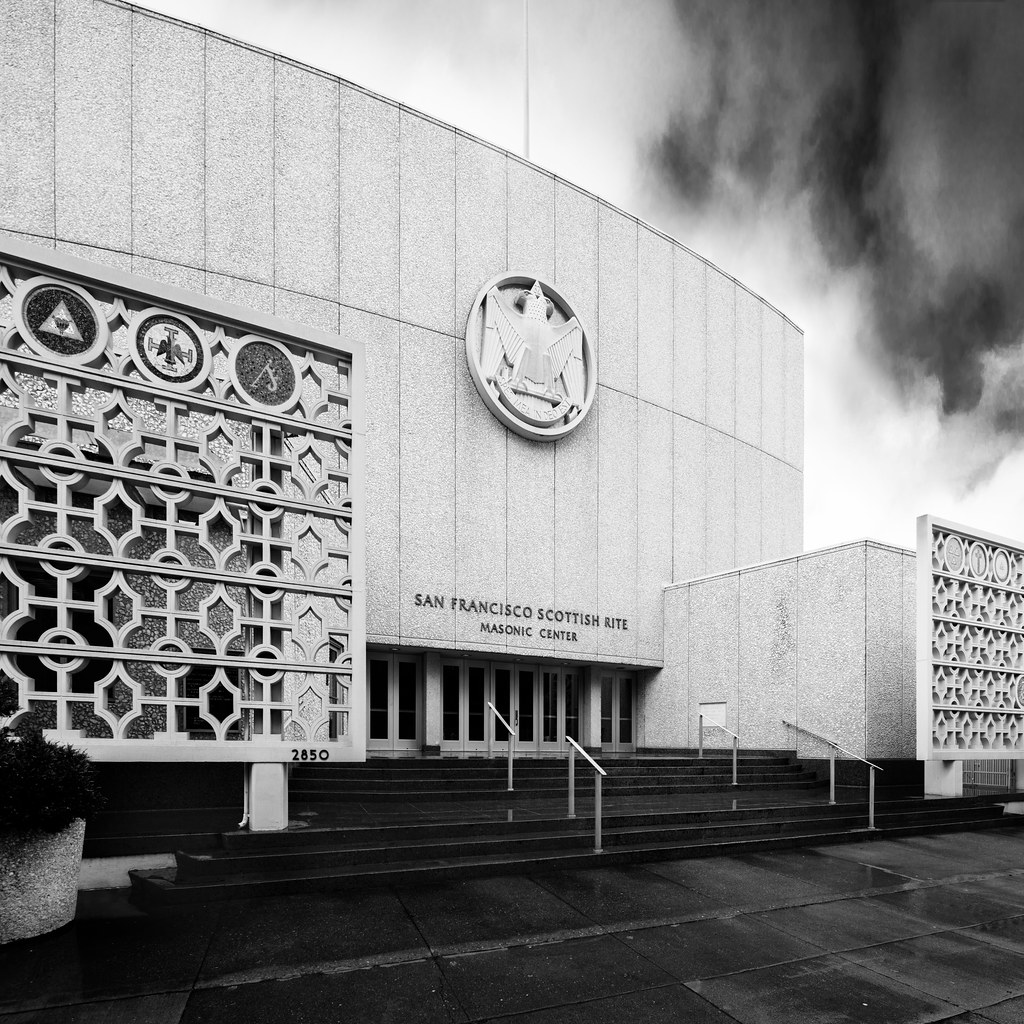 |
| Stone's style was a natural fit for the Scottish Rite Temples and he did several, including this one in San Francisco and another on Wilshire Boulevard in Los Angeles. It was pouring rain when I took this shot... need to go back when there's sun. Photo ©Darren Bradley |
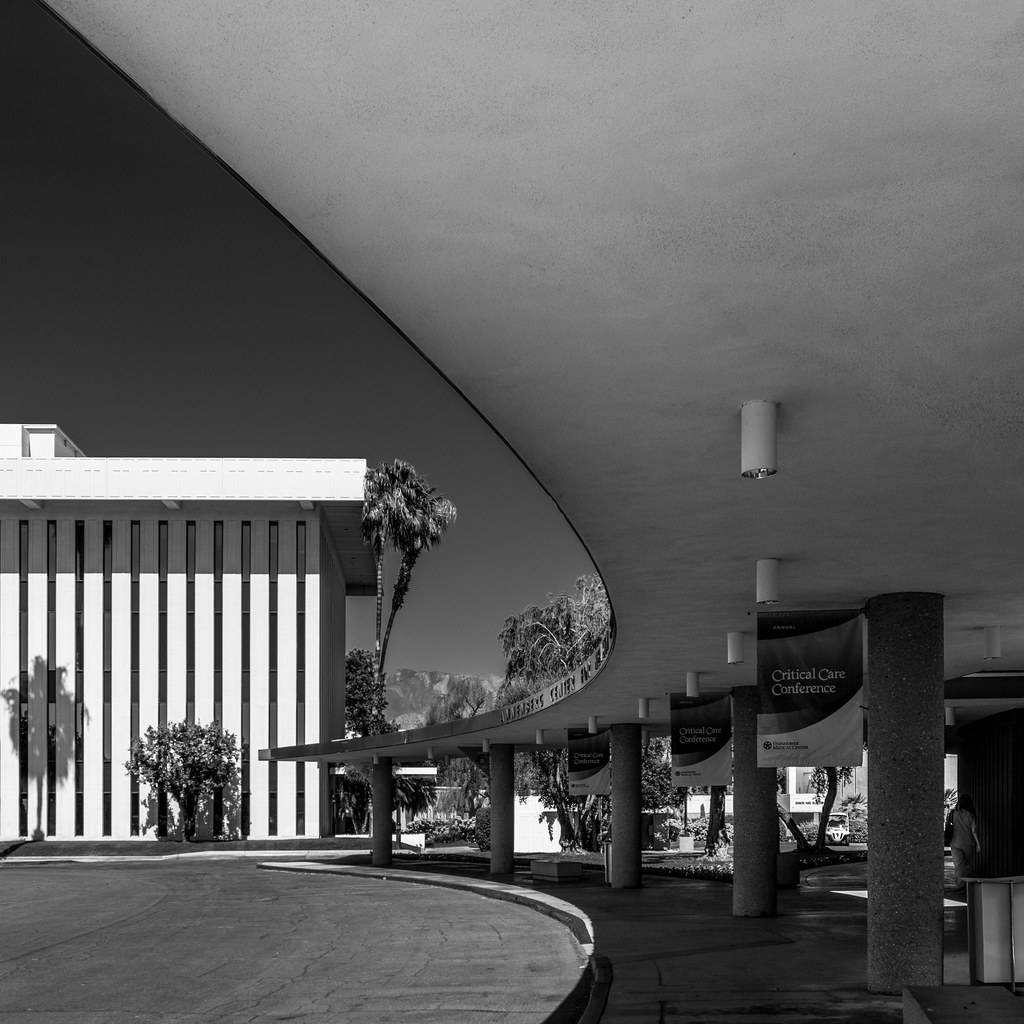 |
| Eisenhower Medical Center in Palm Springs by Edward Durell Stone. Photo ©Darren Bradley |
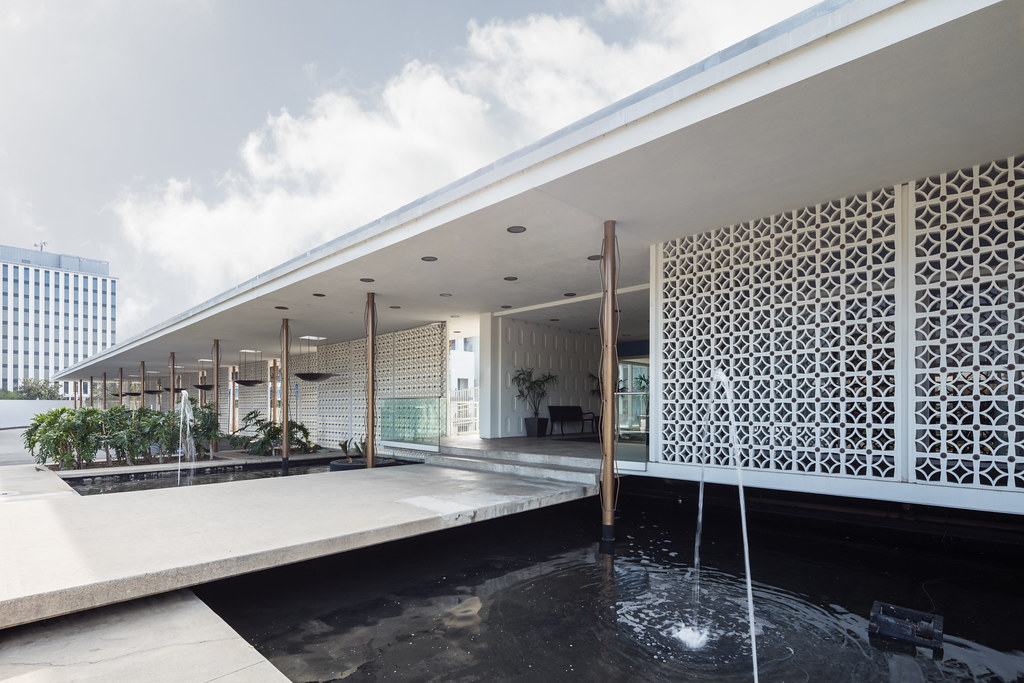 |
| Stuart Pharmaceutical Center in Pasadena (now mostly gone, except this facade, and converted to apartments). Photo ©Darren Bradley |
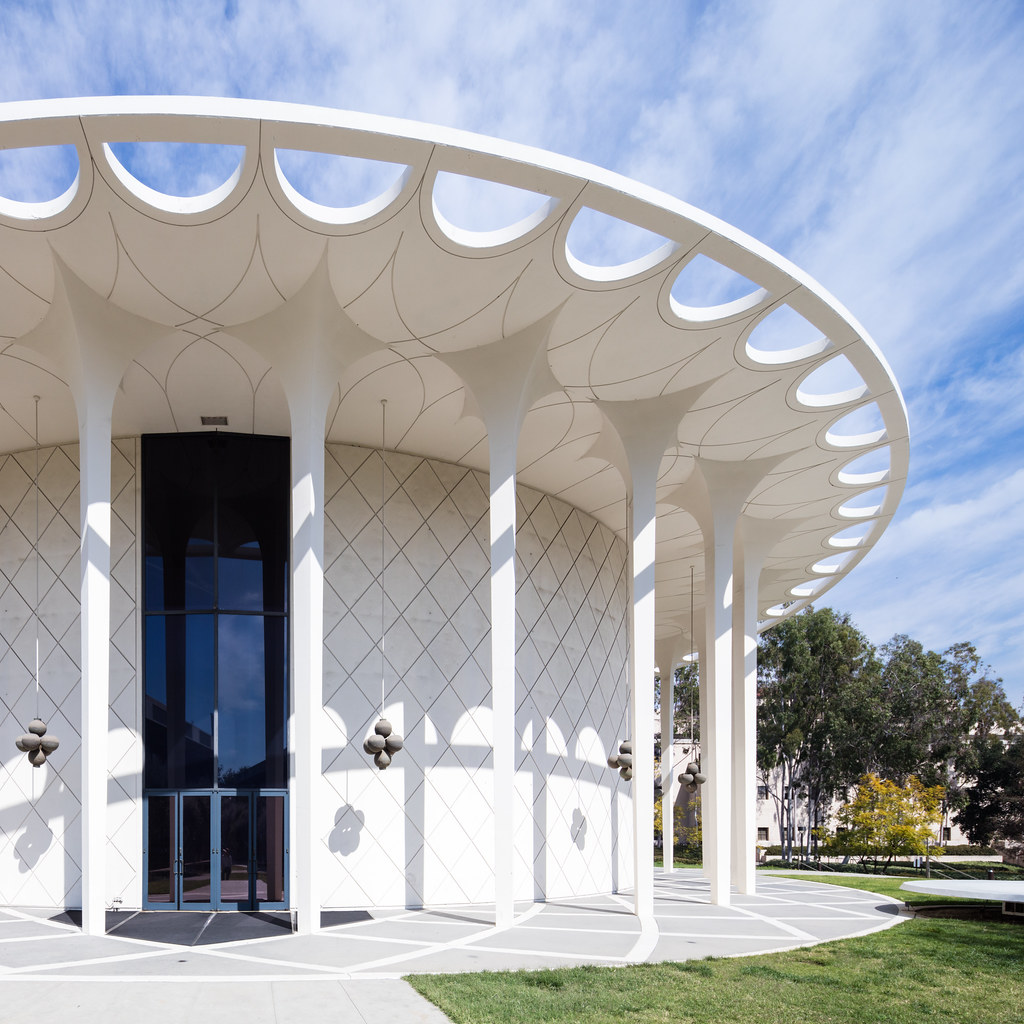 |
| Beckman Auditorium at Cal Tech by Edward Durell Stone. Photo ©Darren Bradley |
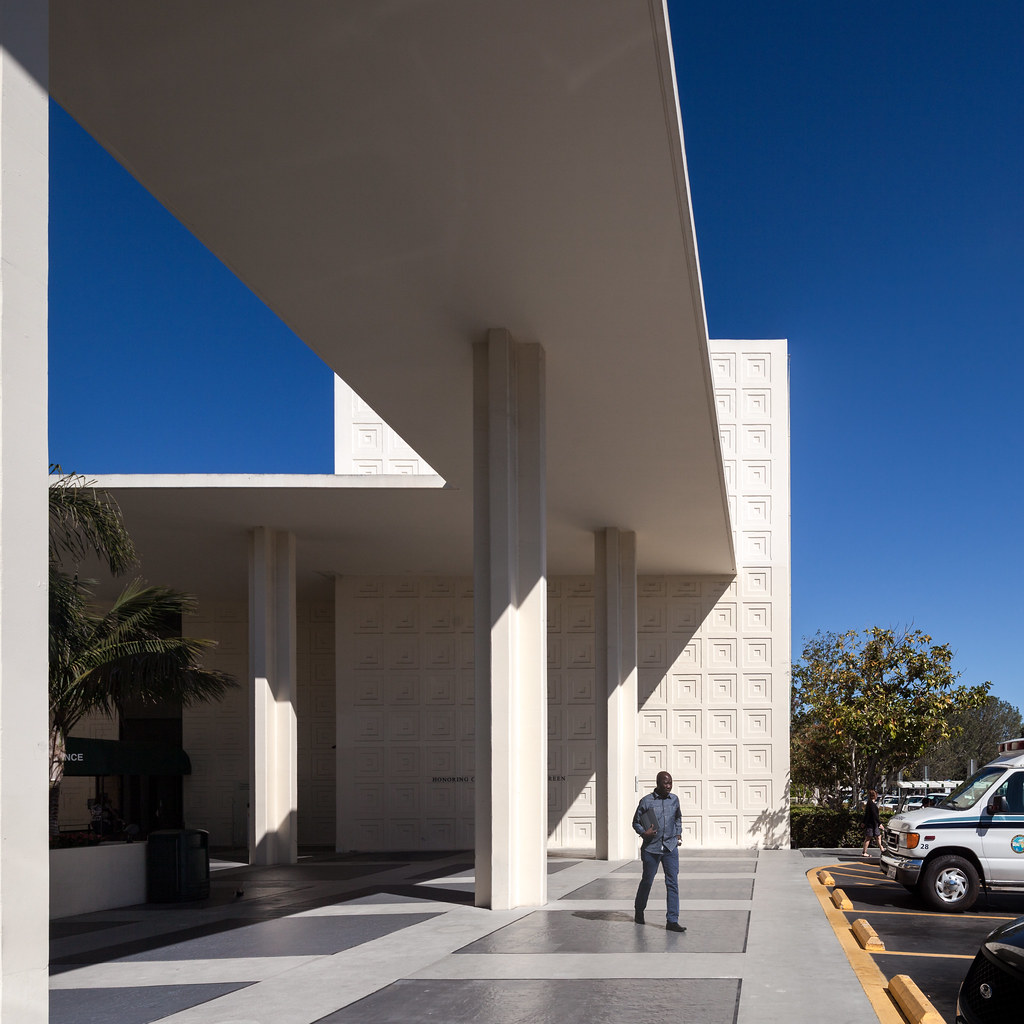 |
| Scripps Green Hospital in La Jolla (San Diego), CA, by Edward Durell Stone. Photo ©Darren Bradley |
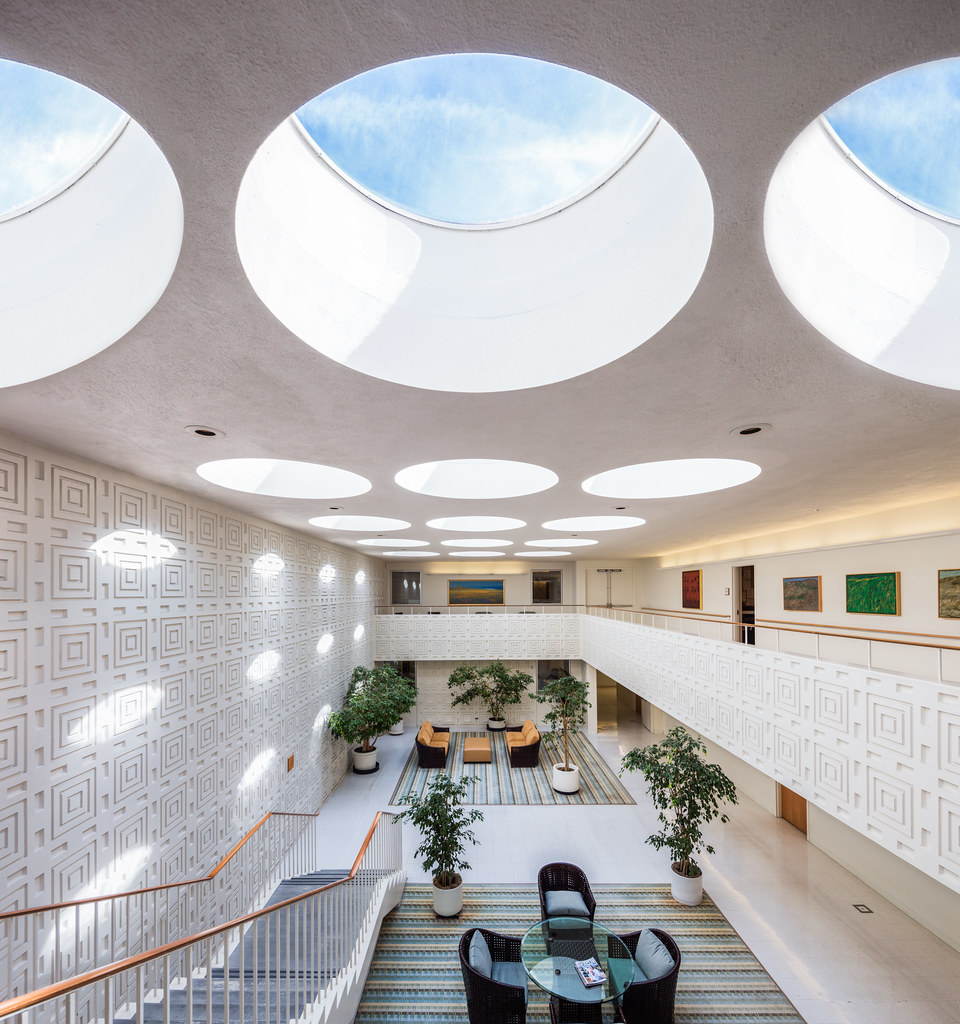 |
| Community Hospital of the Monterey Peninsula (CHOMP) by Edward Durell Stone. Photo ©Darren Bradley |
Quite scandalous, indeed. But the public loved his work - even if the critics did not - and he was never short on commissions. In fact, he even graced the cover of Time Magazine - a rare privilege for anyone - even a celebrity architect.
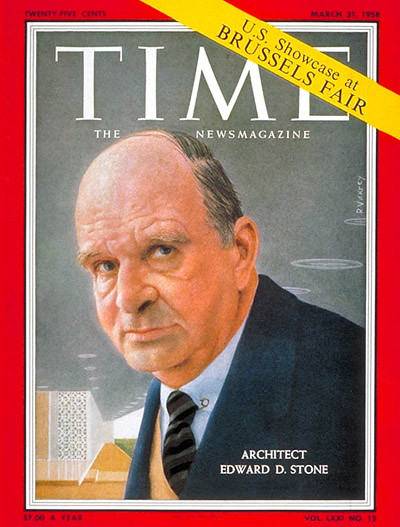
Stone was not alone in his desire to introduce classicist ornamentation and proportions into his designs. Other well known architects such as Morris Lapidus, Charles Luckman, William Pereira, Anshen & Allen, Welton Becket, and Minoru Yamasaki also embraced this style.
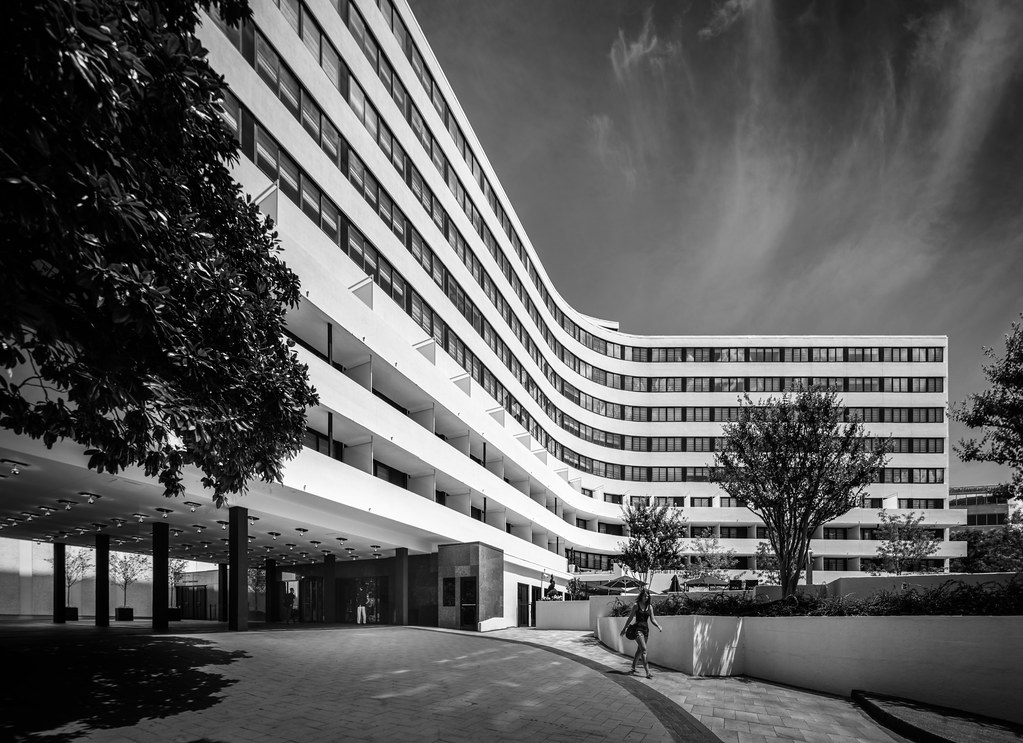 |
| Morris Lapidus is generally associated with his lavish resorts in Miami Beach, but he also designed a couple of hotels in Washington, DC, including this one. Photo ©Darren Bradley |
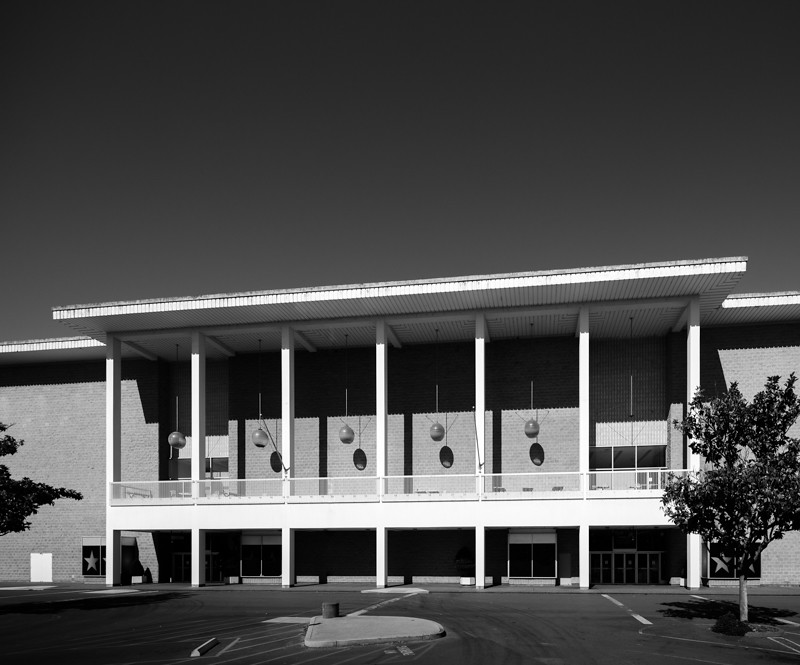 |
| The Emporium Department Store in Santa Rosa, CA, by Welton Becket & Associates. Photo ©Darren Bradley |
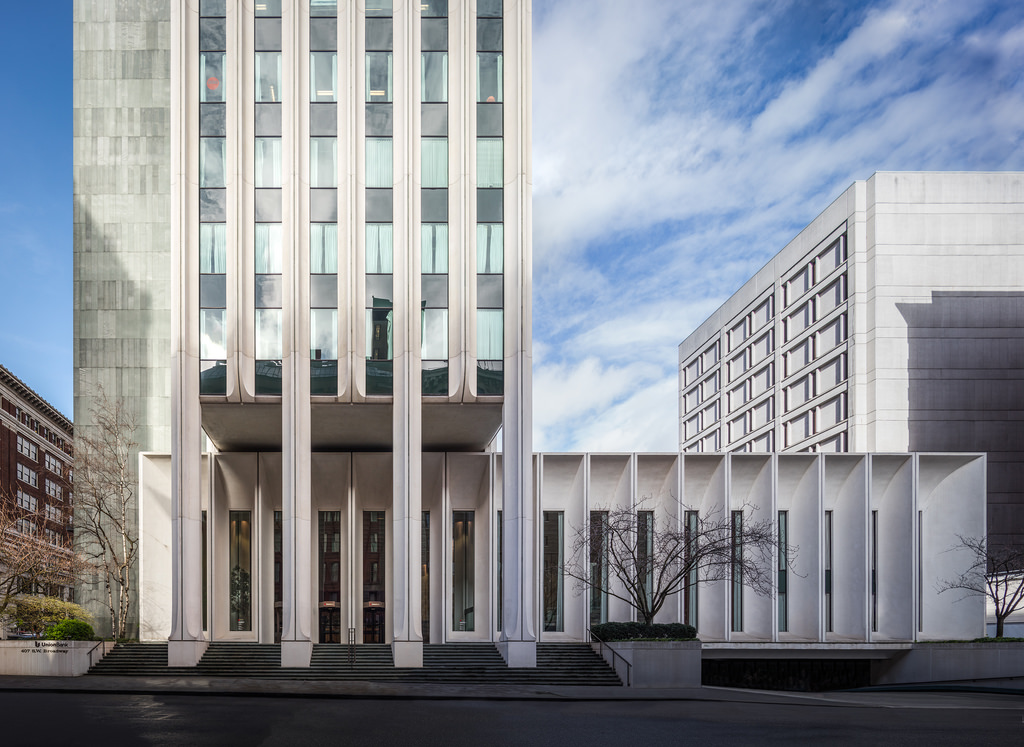 |
| The Union Bank Building by Anshen & Allen in Portland, Oregon certainly fits the bill for New Formalist style, by adapting Classicist styling cues such as the pedestal and the colonnade, and adapting more streamlined, swooping curves to them. Photo ©Darren Bradley |
Often, the result was a sort of hybrid form that seemed to blur the lines between Googie and other sub-forms of Modernist architecture.
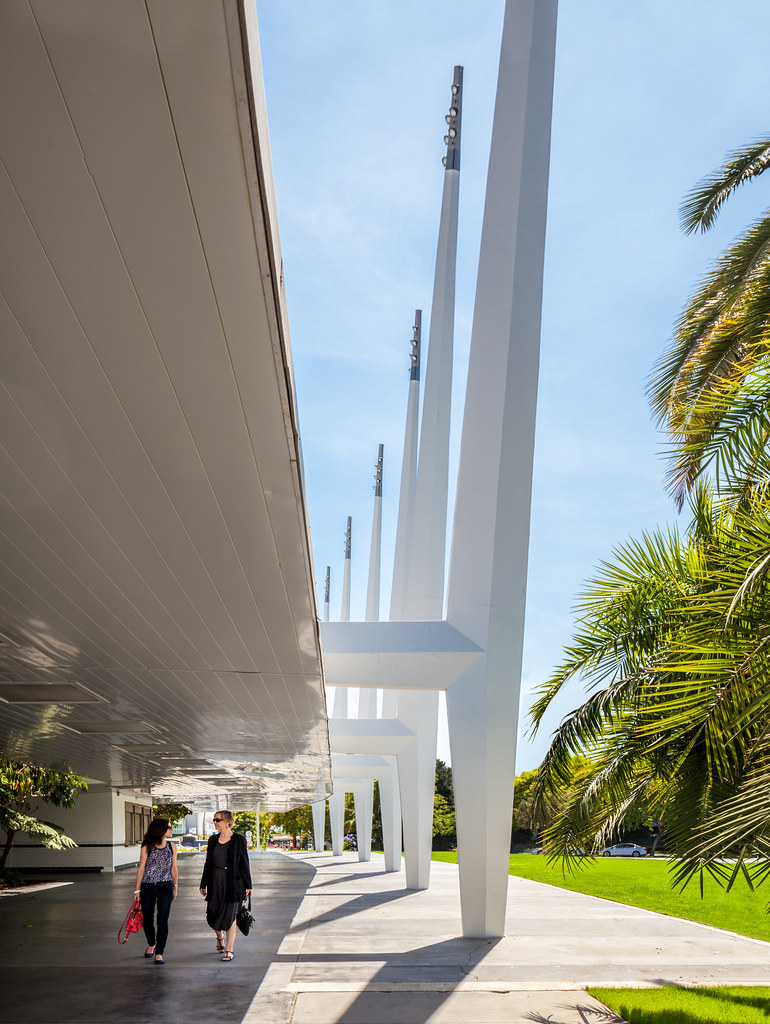 |
| Welton Becket's Santa Monica Civic Auditorium blurs the lines between Googie and New Formalism. Photo ©Darren Bradley |
Perhaps one of the best known examples of New Formalism are the ubiquitous Home Savings & Loan bank buildings. These banks (later renamed Home Savings of America) were owned by Los Angeles multi-millionaire Howard F. Ahmanson (1906-1968).
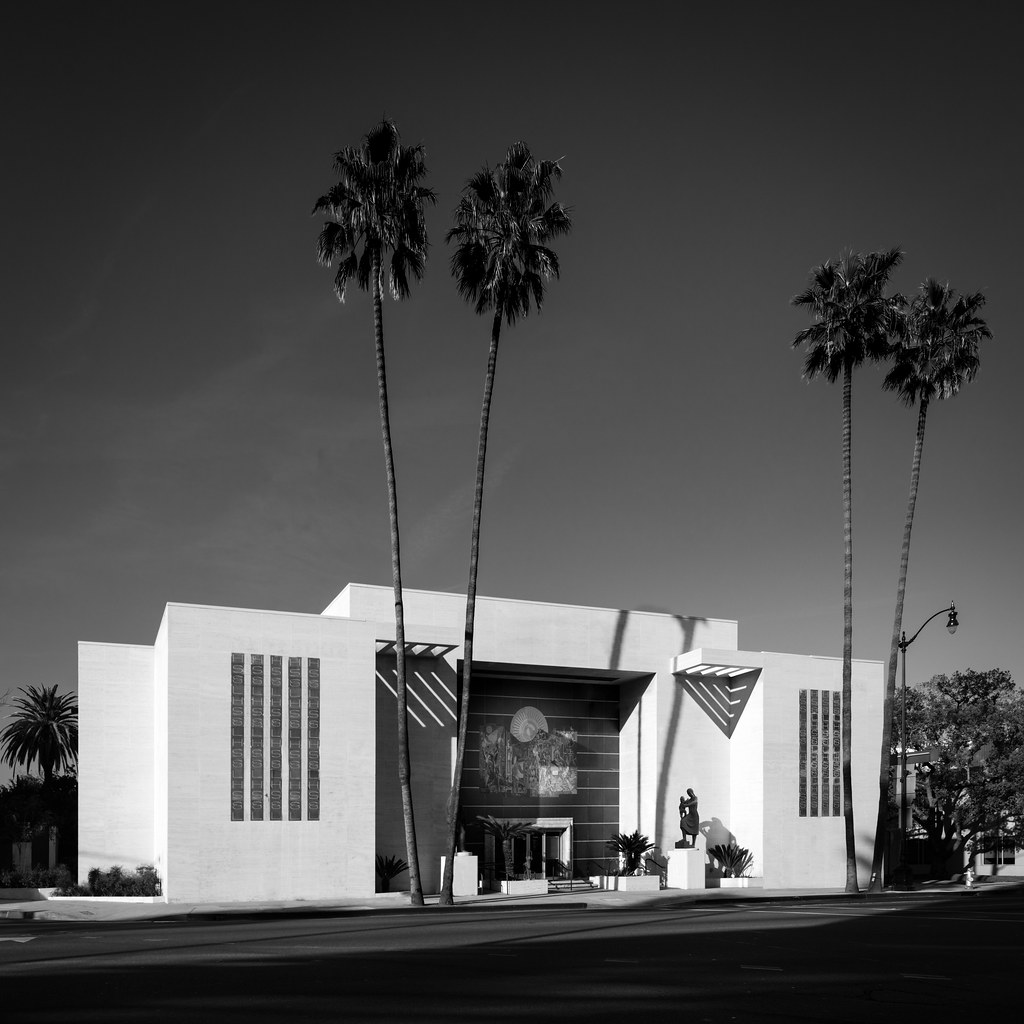 |
| Beverly Hills Home Savings & Loan by Millard Sheets. Photo ©Darren Bradley |
Ahmanson was a great lover of the arts and architecture, and a philanthropist who supported museums and art institutions in Los Angeles. (In fact, architect William Pereira was also a close friend and was part of the racing team on Ahmanson's sailboat when they won the Transpac to Honolulu).
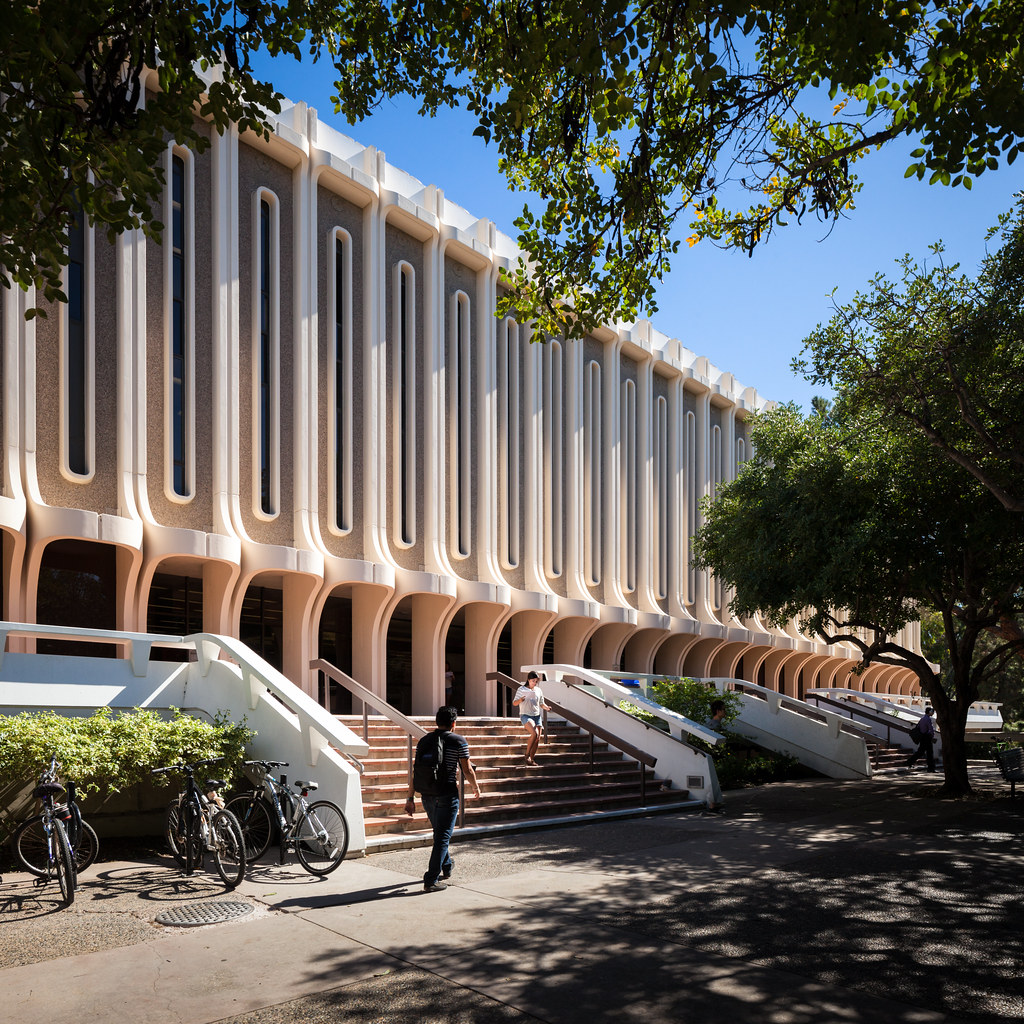 |
| UC Irvine Library by William Pereira. Photo ©Darren Bradley |
He felt that his bank branch buildings should also showcase art and design. So starting in 1952, Ahmanson hired artist and architectural designer Millard Sheets to design bank branches around the region and eventually other parts of the country.
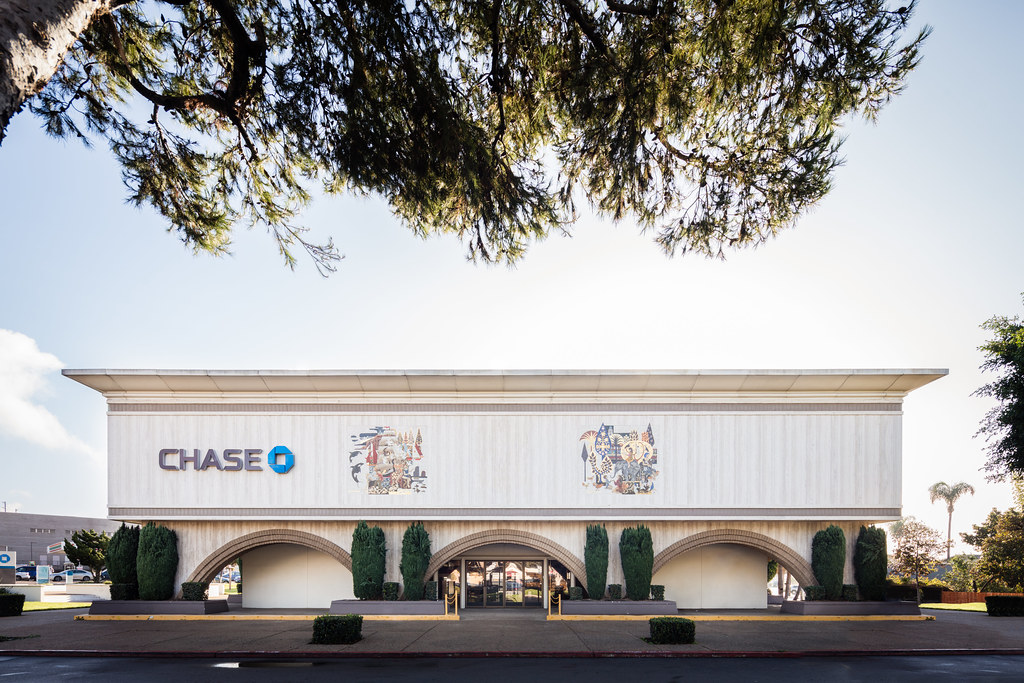 |
| Sheets-designed bank with historical tile murals in Pacific Beach, San Diego. Photo ©Darren Bradley |
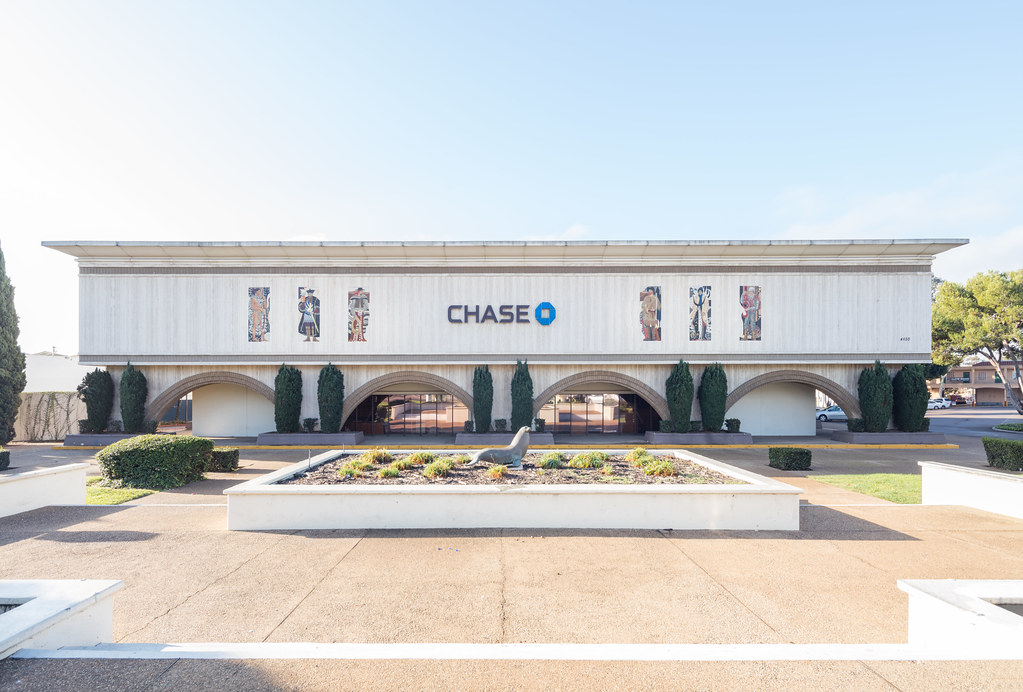 |
| Sheets-designed bank in Pacific Beach, San Diego, CA. Photo ©Darren Bradley |
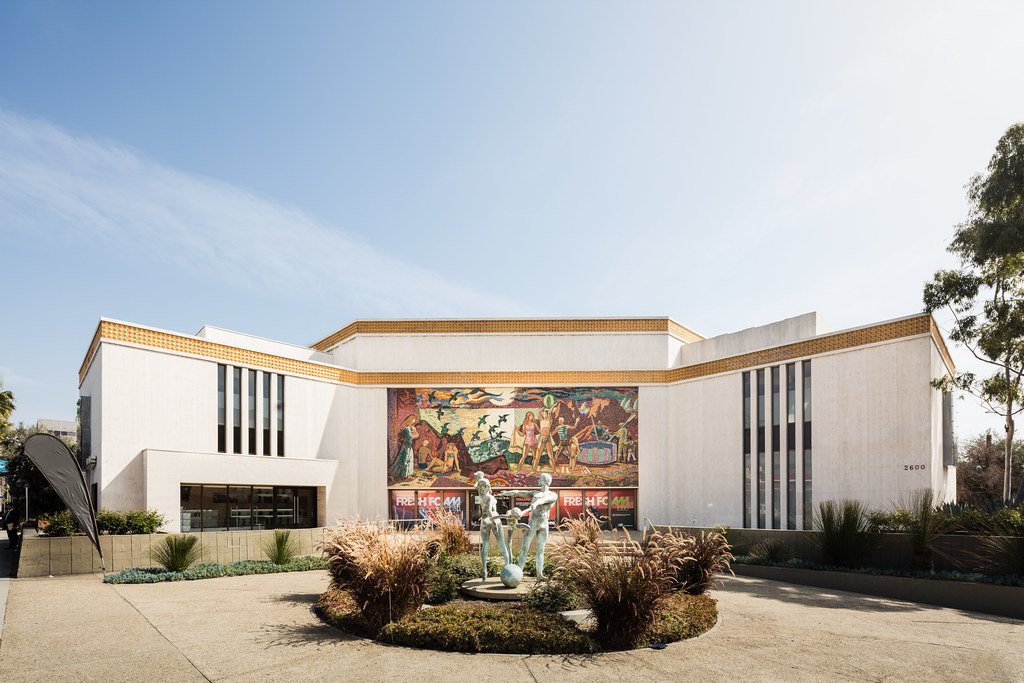 |
| Sheets-designed bank in Brentwood, Los Angeles. It's now a Footjoy and New Balance Shoe store. Photo ©Darren Bradley |
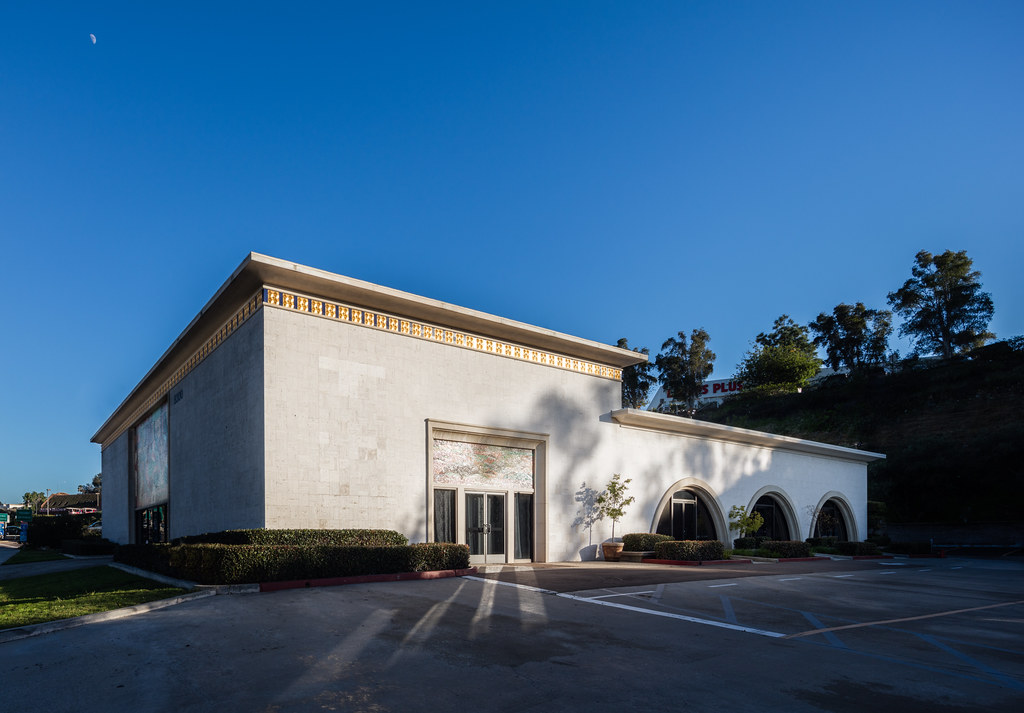 |
| Sheets-designed former Home Savings & Loan in La Mesa (San Diego, CA. Now a city job search center. Photo ©Darren Bradley |
Sheets, who was Director of the Otis Art Institute starting in 1953, integrated the works of local muralists, ceramicists, sculptors, and other artists into the bank designs.
 |
| The artwork on the banks is frequently inspired by local themes - in this case, the San Diego Zoo. This mural, signed "SH", reminds me a bit of Mary Blair's work. Photo ©Darren Bradley |
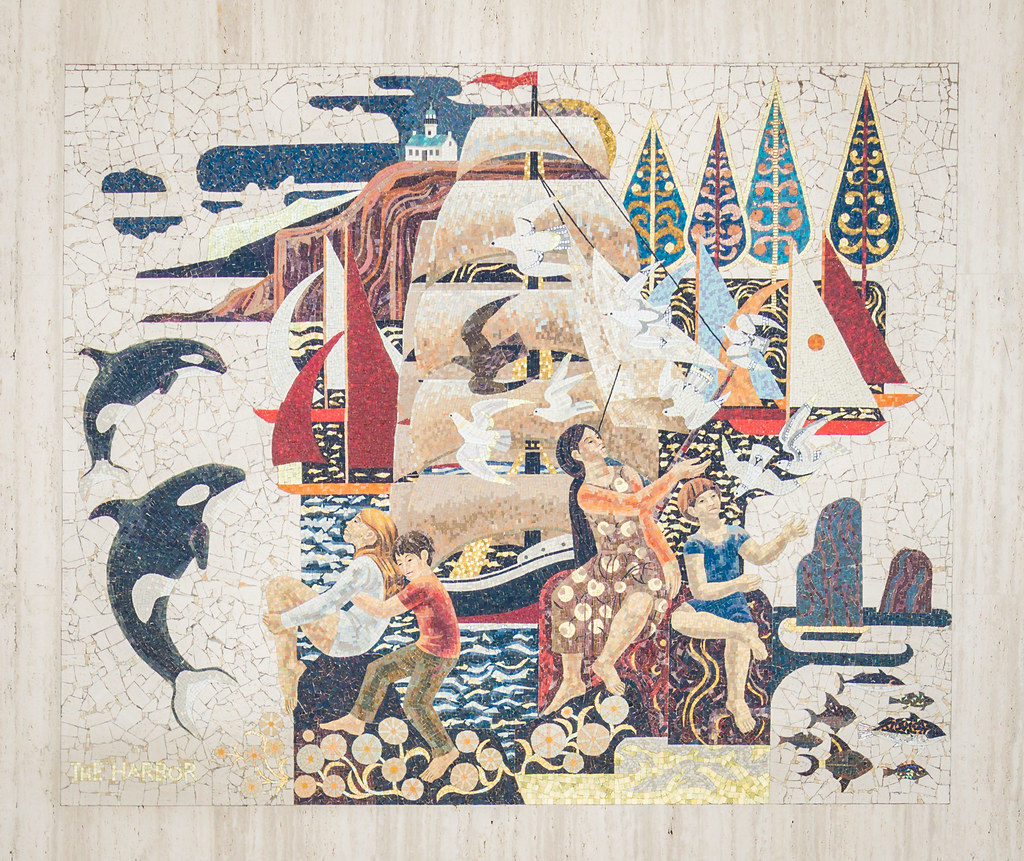 |
| This mural has the San Diego Harbor as the theme. Photo ©Darren Bradley |
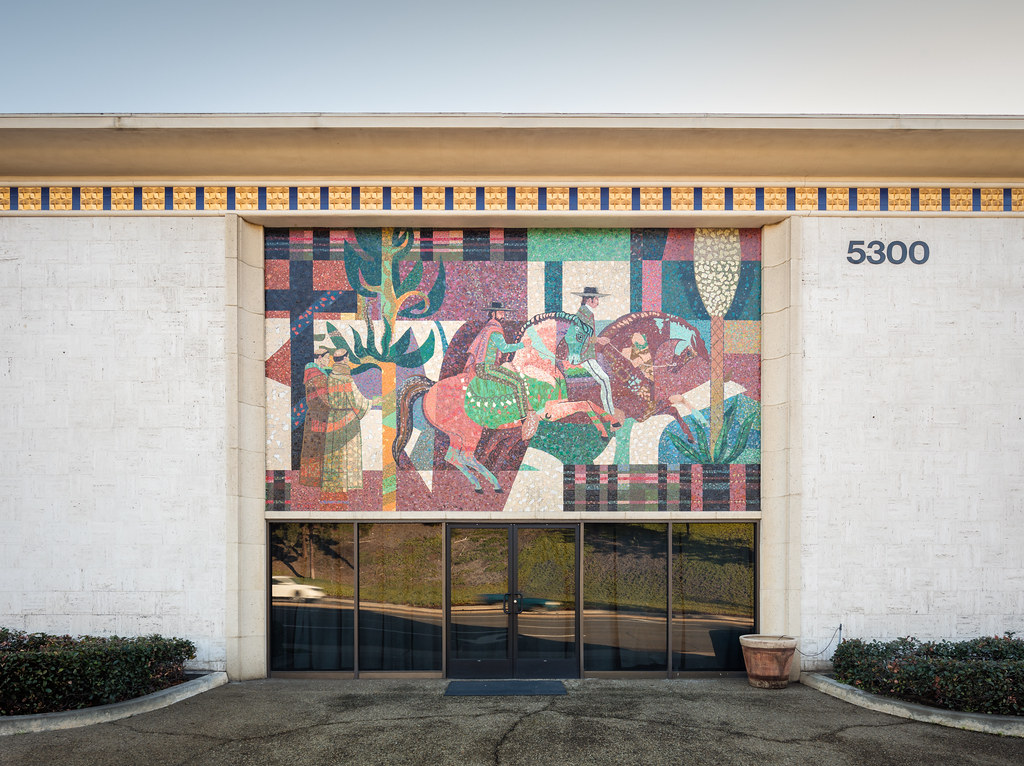 |
| The Mexican Rancheros are the theme for this mural at the La Mesa branch. Photo ©Darren Bradley |
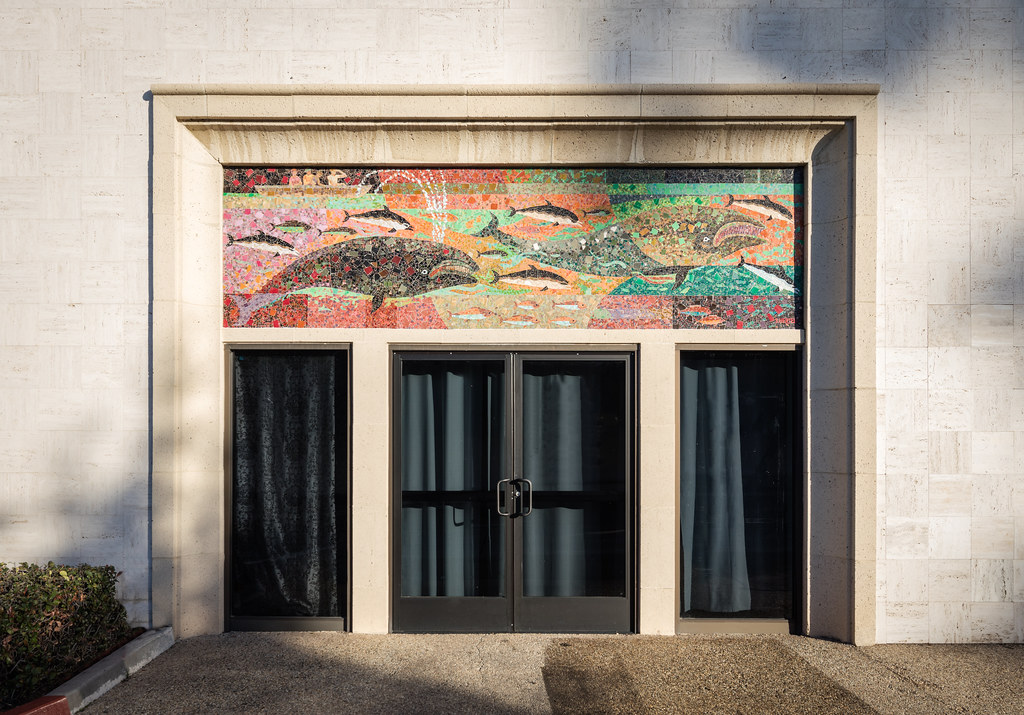 |
| Local blue whales are the theme of this mural in San Diego. Photo ©Darren Bradley |
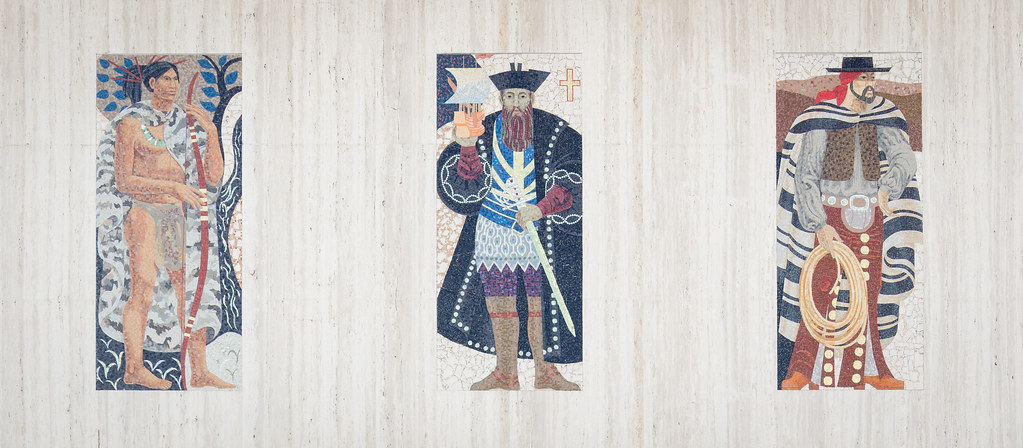 |
| Historical figures represent various periods of local San Diego history. Photo ©Darren Bradley |
Alas, after several downturns, HSA was finally acquired in 1998 (by Washington Mutual - boo... don't get me started on them). In 2008, WaMu collapsed and most of the HSA assets (and Sheets-designed buildings) were acquired by Chase Bank.
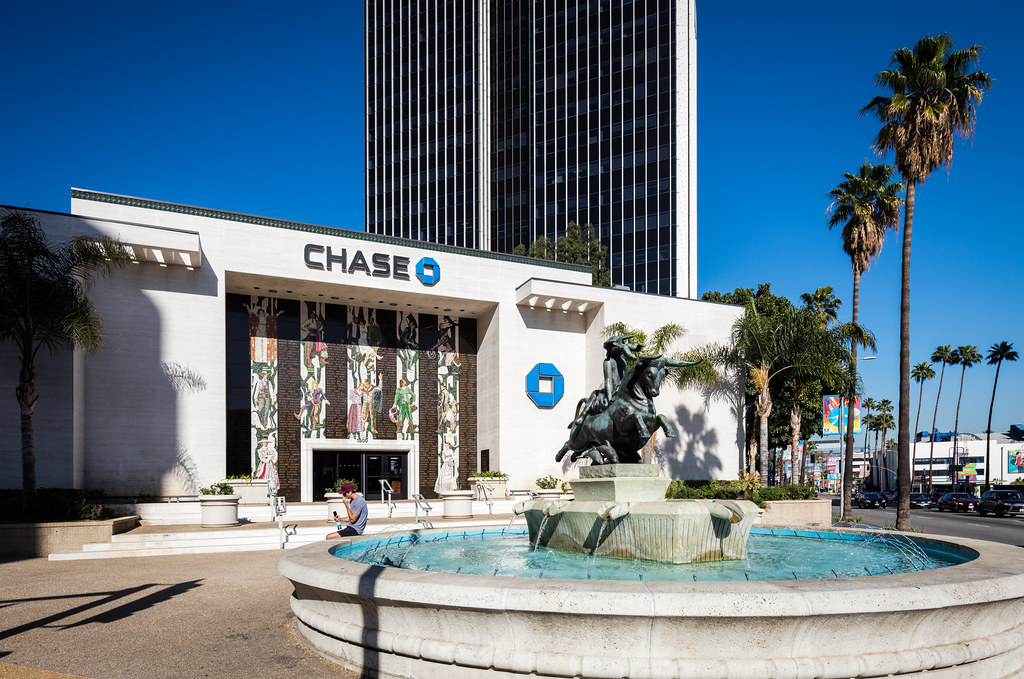 |
| The Hollywood branch of the former Home Savings & Loan by Millard Sheets. Photo ©Darrren Bradley |
Howard Ahmanson knew what he liked. And that was New Formalist architecture. As I mentioned, he funded many artistic and cultural institutions in Los Angeles. And you will see a common theme in the architecture of those institutions that he did support. For example, the Dorothy Chandler Pavilion at the LA Music Center, by Welton Becket...
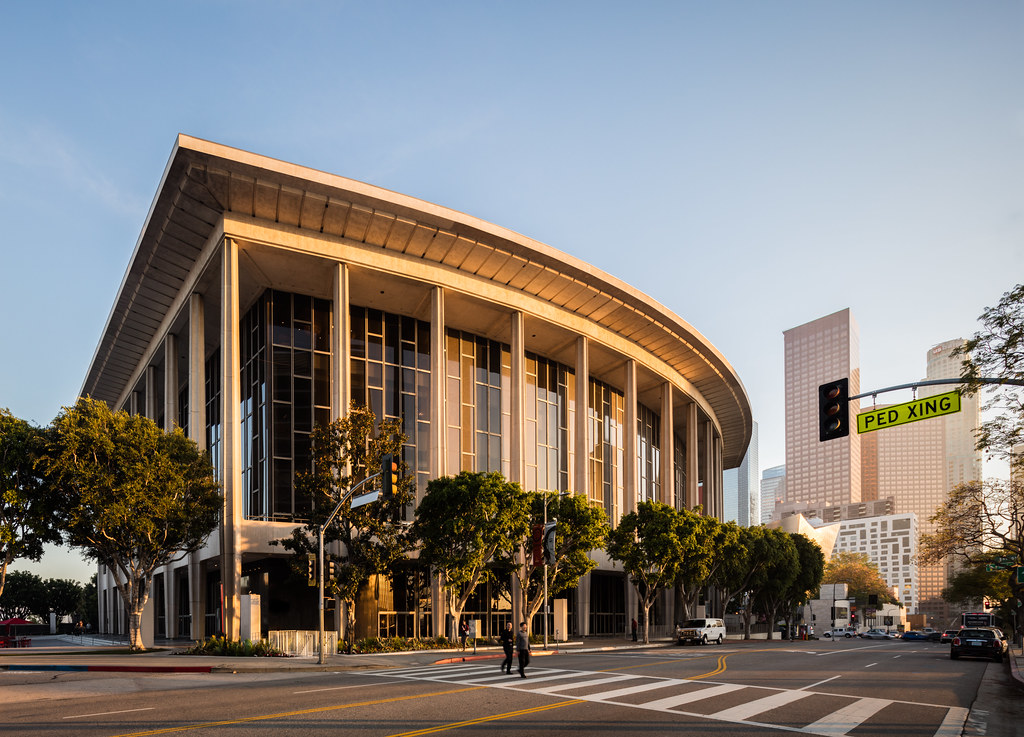 |
| Dorothy Chandler Pavilion at the LA Music Center. Photo ©Darren Bradley |
Ahmanson also hired Edward Durell Stone to design an office complex with his namesake, the Ahmanson Center on Wilshire Boulevard.
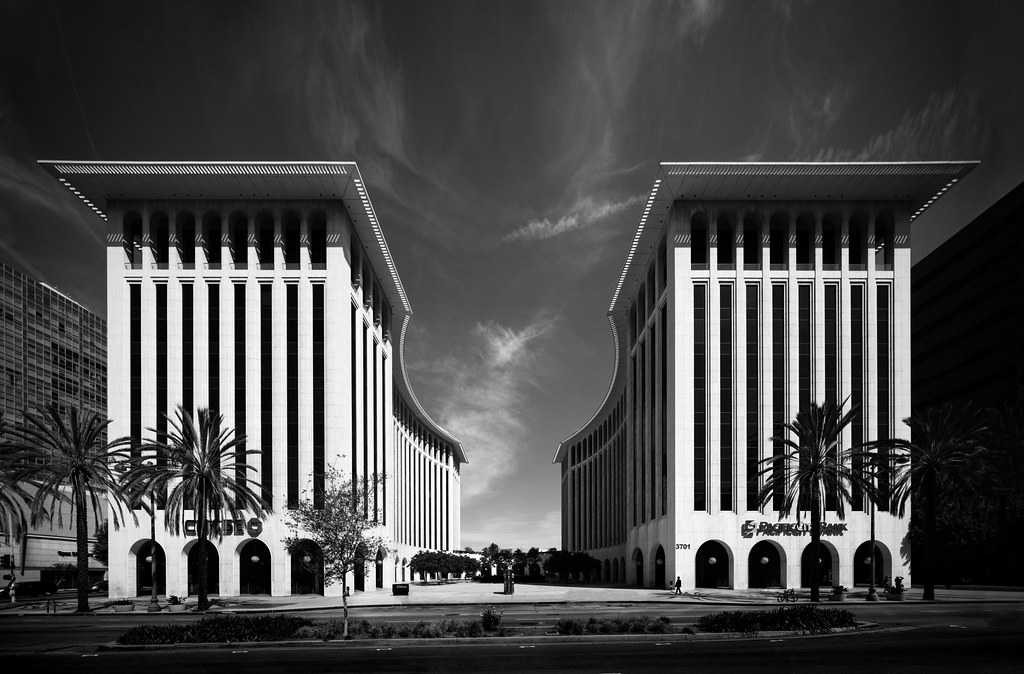 |
| The Ahmanson Center is now called the Wilshire Colonnade. Photo ©Darren Bradley |
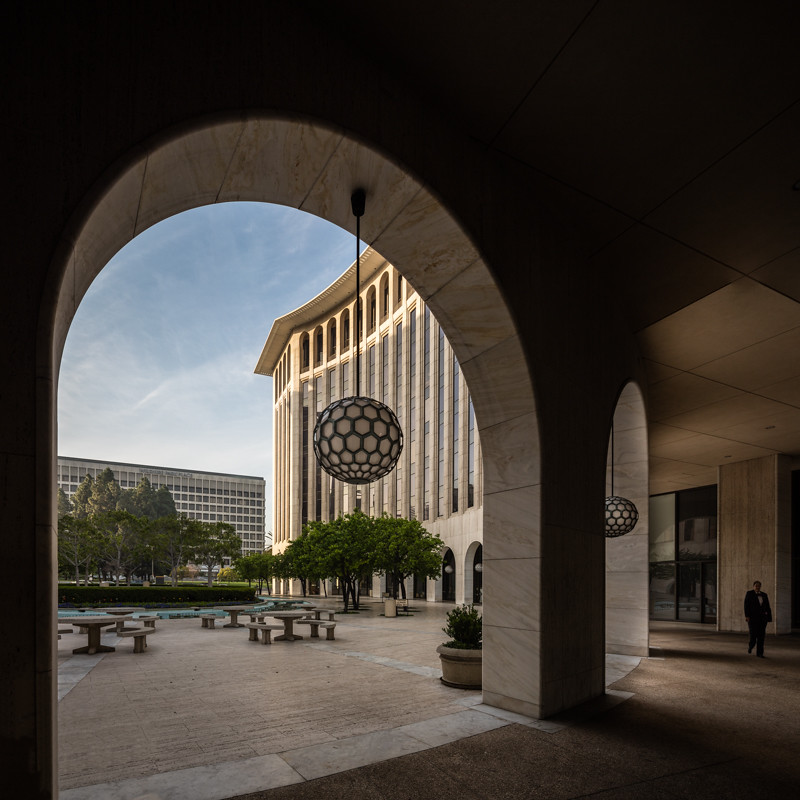 |
| Note the heavy use of marble and travertine, and the colonnade and arcades... all classic traits of a good New Formalist building. The security guard on the right side of the frame about to kick me out is optional. Photo ©Darren Bradley |
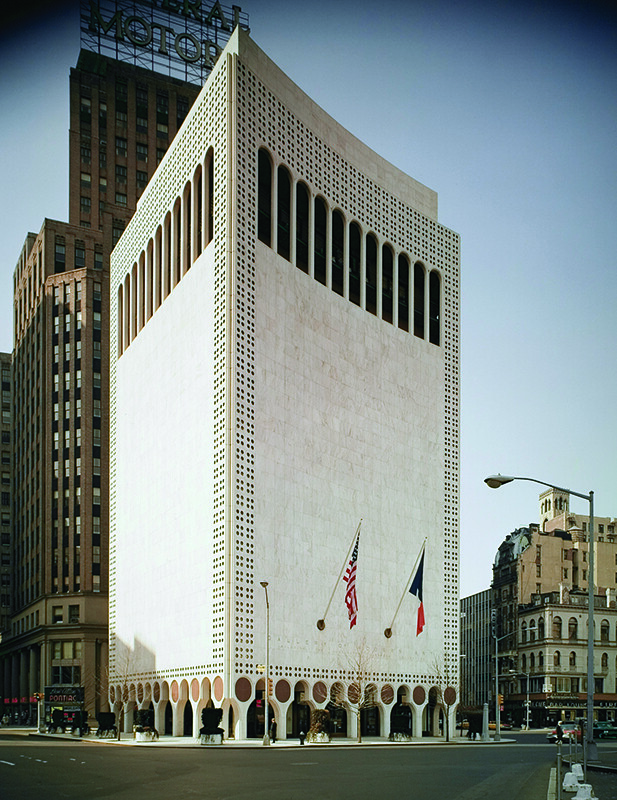 |
| Edward Durell Stone's Gallery of Modern Art at 2 Columbus Circle in New York City (1964) employed elements of Venetian and Byzantine design. Ada Louise Huxtable, the influential architecture critic for the New York Times, called the building a “die-cut Venetian palazzo on lollipops”. Photo by Ezra Stoller/ESTO via Wikimedia Commons. |
Perhaps the most well known example is the disgrace that is the disfiguring of Stone's 2 Columbus Circle today. Despite a rather vociferous campaign to save it, the Museum of Arts & Design radically altered the building. It's believed the Huxtable's disdain for its design may have been the final nail in its coffin.
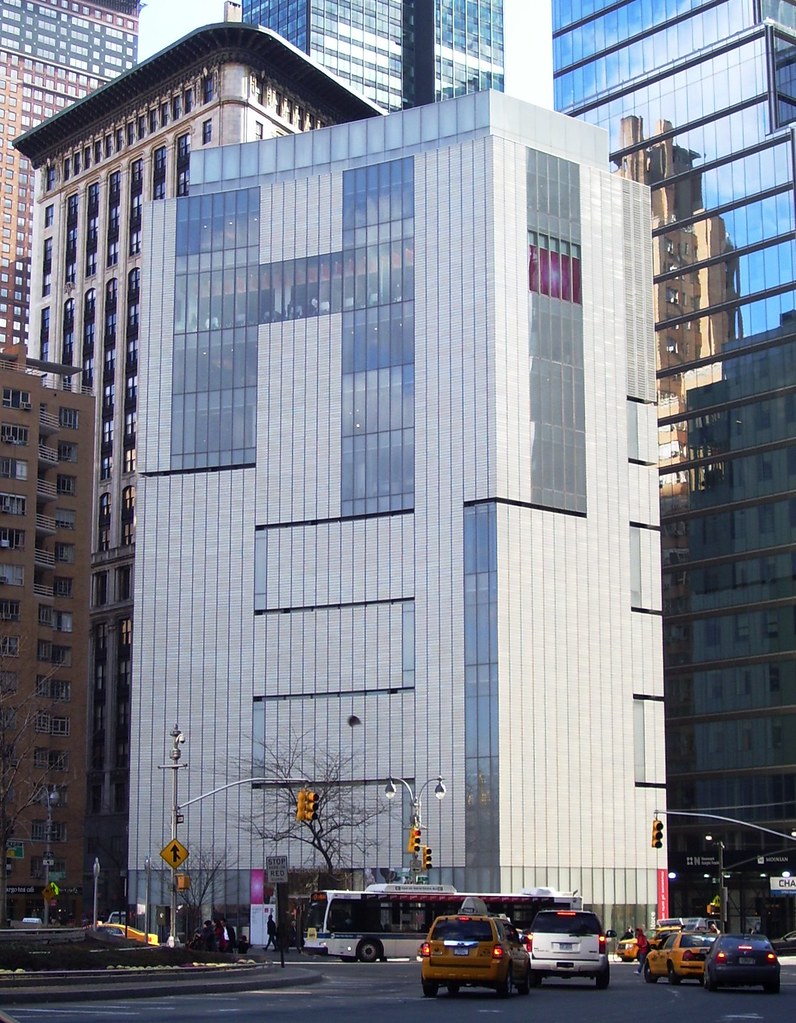 |
| Why..? I have no words... The "renovation" was done by Allied Works Architecture. Is there anyone who really thinks this is better? Photo via Wikimedia Commons. |
More recently, Stone's Busch Stadium in St. Louis is one of the latest victims. It was razed in 2006.
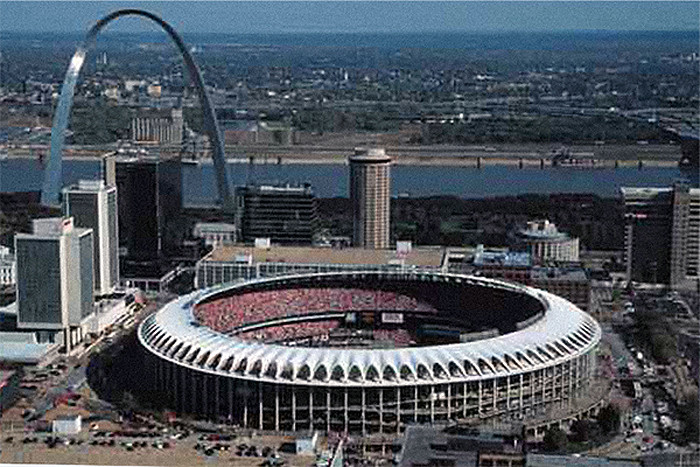 |
| The 96 arches on the roof around Busch Memorial Stadium were intended to evoke the Saarinen's St. Louis Arch. Turns out nobody cared. It was demolished in 2006. Saarinen, ironically, was also often ridiculed by architecture critics. Photo via Wikimedia Commons. |
That said, people these days are not really bothered by the lack of orthodoxy in the design, and even architecture geeks like myself have come to appreciate the work (especially in comparison to most of what came after it)...
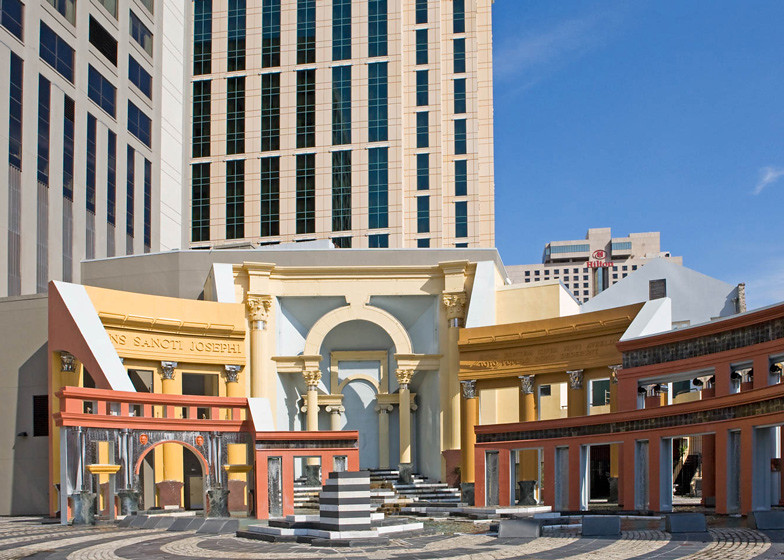 |
| Not a fan of New Formalism? Not to worry... this is coming right on its heels! Piazza d'Italia by Charles Moore in New Orleans... Photo via Dezeen. |

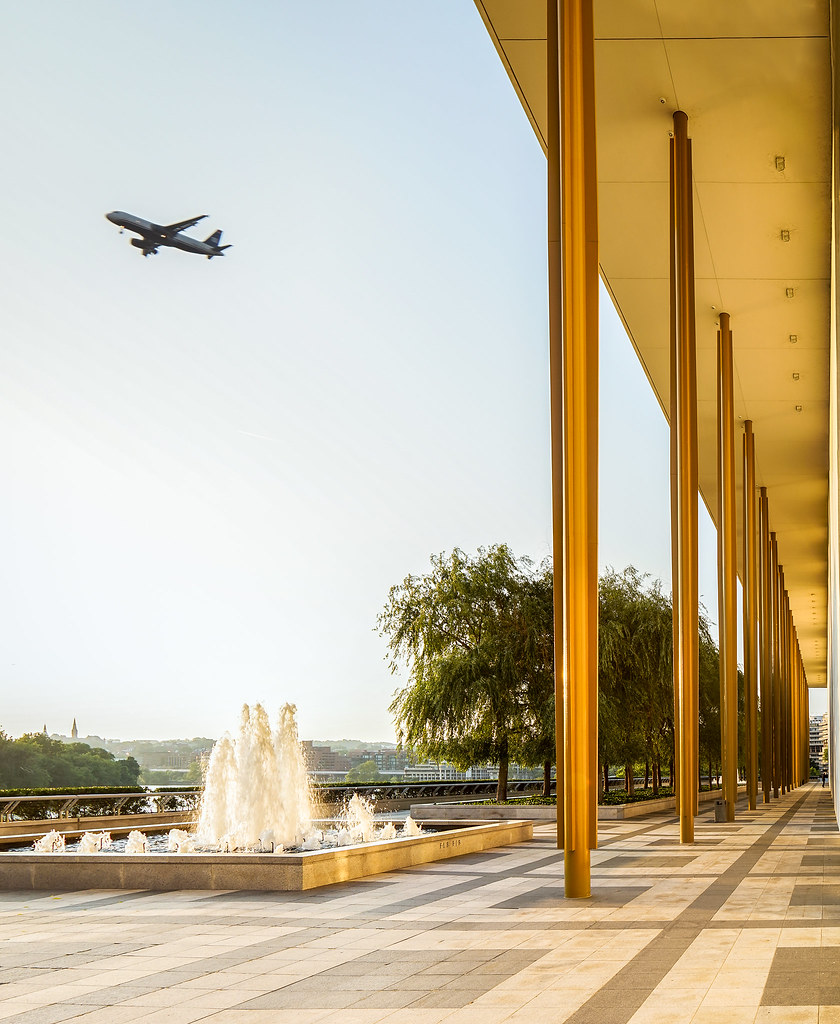
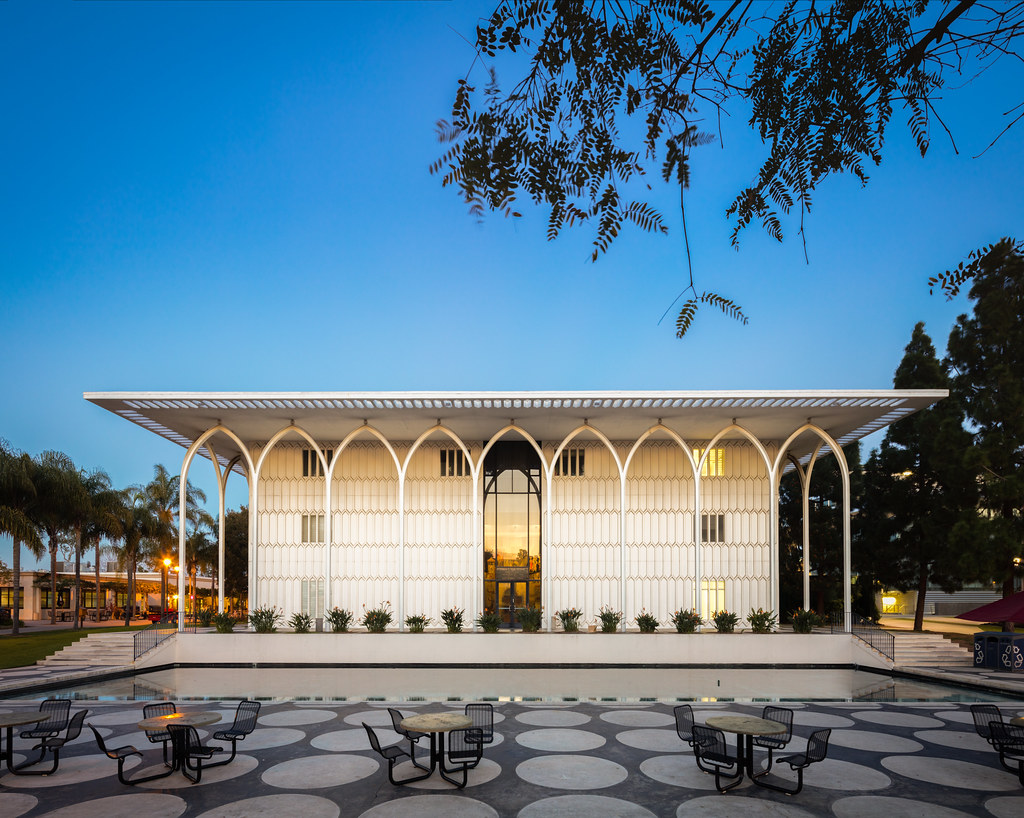
No comments:
Post a Comment